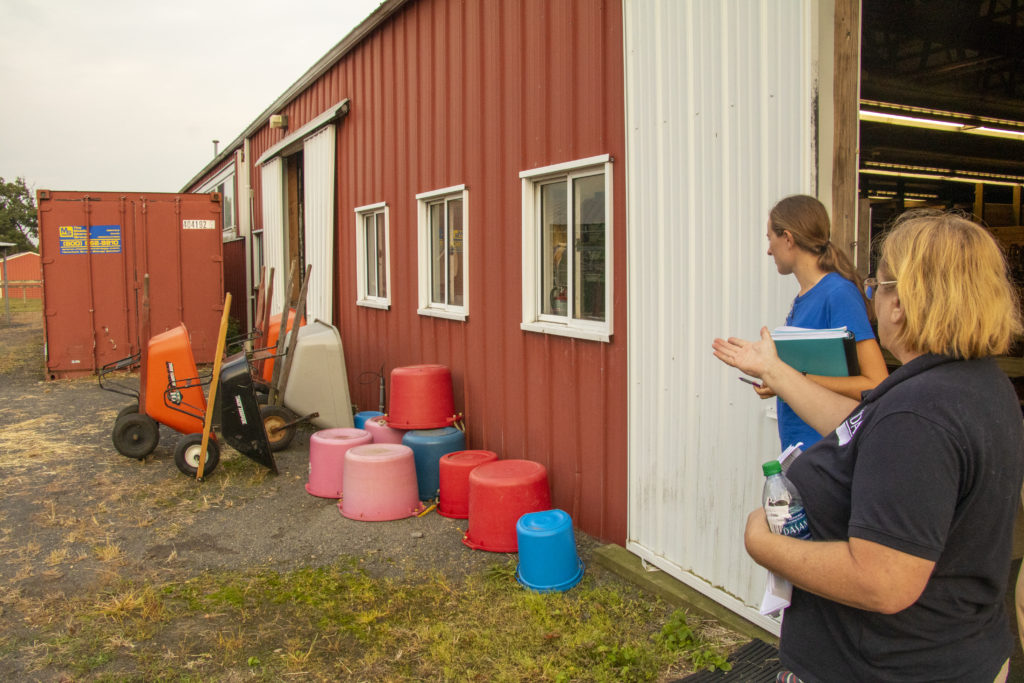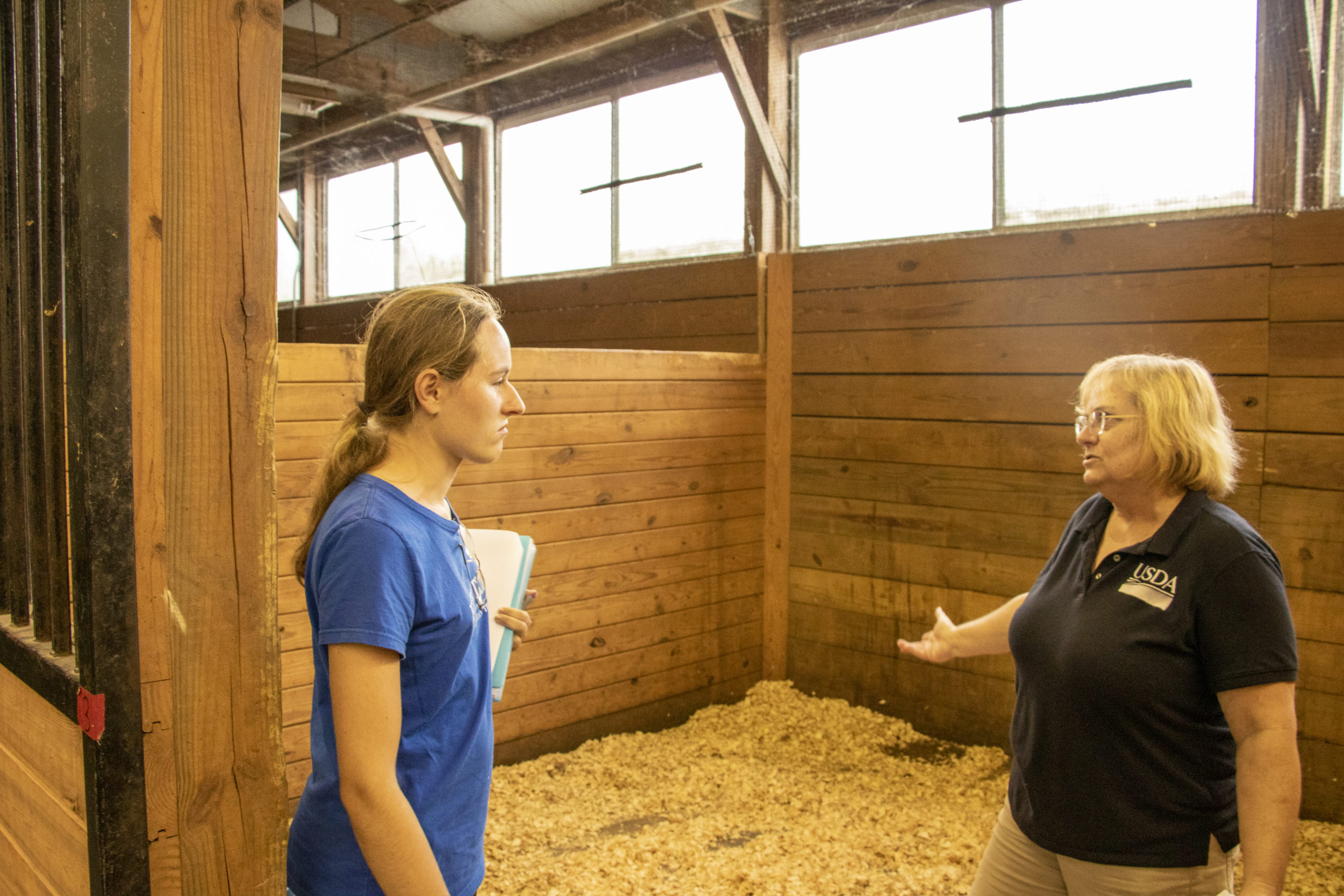Hay Everyone!
My two-legged friends at the Equine Science Center find themselves with too much time on their hands and an itch to be moving around. I called a meeting of my four-legged friends and we came up with the perfect task for our human friends – spring barn cleaning. There’s nothing like a little elbow grease to make you feel like you’ve put in a good day’s work. As you clean the barn and surrounding area, it’s also the perfect time to make sure your barn is a safe place and you’ve minimized the risk of fires. Let’s look at what areas you should pay attention to while cleaning. We’ll also review some safety tips as we go along!
The first place to start any good cleaning program is with all those cobwebs dangling from the ceiling and the layer of dust coating the surfaces in the barn. The surfaces you never look at are the ones which are inches deep in dust. My nose itches just thinking about it! Achoo. While no barn will ever be completely free of dust and dirt, you can minimize the buildup of this highly combustible substance. (My trusty dictionary tells me combustible means it’s able to catch fire and burn easily.) Obviously, anything that catches fire easily is not something you want in your barn. Wiping down all the surfaces in the barn and taking a broom to those cobwebs on a routine basis will make your barn a safer place to be. The best time to perform this task is when all the horses are outside. You don’t want to stir up the dust and send it right up our noses! Hay, bedding material, blankets, paint, fertilizer, and pesticides and herbicides are also considered highly combustible, so you’ll want to store these items somewhere other than your barn. A designated shed or other storage area away from the barn is the perfect place! Accelerants (Dictionary to the rescue again! This one means substances which increase the speed at which a fire spreads.) should not be stored in the barn either. This includes substances like gasoline and oil.
Since we’re on the topic of fire safety, we should take a few moments to check out what else we can do to minimize the risk of a barn fire. Of course, smoking should never be allowed in the barn, since a stray spark can easily set the whole place on fire. Does your property have no smoking signs clearly posted? This spring season is also the perfect time to check the electrical systems in your barn. Are there any frayed wires that need to be replaced? Do all your light fixtures have safety covers? You should also check any appliances in the barn including heaters and fans. These devices should be carefully inspected for potential problems such as frayed cords. Of course, you should also make sure they are out of the reach of your horses. You never know, we might get curious and try to take a bite out of it.
You’ll also want to check your barn’s fire extinguisher. Is it still in good working order? Do you even know where to find it? Lastly, you’ll want to think about access to your barn for emergency vehicles. Does your driveway need a little attention to be passable for a large firetruck? Check the surface of the driveway as well as any hanging branches or trees. These tips are a good starting point for preventing barn fires, for more information you can check out the Fire Prevention and Safety Measures Around the Farm Fact Sheet.

Fire prevention is only one aspect of farm safety. There are many other accidents that can happen at a farm or in the barn. Let’s look at some more things you can do to keep yourself and your horse safe. We all know dust has a habit of building up in those unused corners, but various odds and ends like empty feed bags and hay strings can also pile up in those corners. Spring cleaning is the perfect time to find a permanent home (maybe in the dumpster) for all those odds and ends piling up around the barn. You can also take a few moments to look at your landscaping. Do any of you shrubs or trees need to be trimmed? While you’re at it make sure none of those plants are harmful to horses or other animals living at your barn. You’ll also want to inspect your turnout areas for poisonous plants.
The walk around your pasture can serve more than one purpose. You can also use this time to inspect the fences for damage including loose boards and protruding nails. The same inspection should be made inside the barn, especially in your horse’s stall. Once you’ve covered both these locations you can move to the arena. The fencing should be secure and free from loose boards or protruding objects. This is also the perfect time to inspect any equipment in the arena. Any broken items should be repaired or thrown away before you or your horse become injured. This list will get you started on inspecting your farm and barn for safety. For a more complete list, look at the Fact Sheet on Safety Recommendations.

Your inspection of your farm and barn should also include a look into your first aid kit. The first question you should address is whether your even have a first aid kit readily accessible. Ideally, you’ll have a human first aid kit and a horse first aid kit. Assuming you do have one of each, you should go ahead and open them up. Are they well-stocked with all the necessary supplies? Are there any medications out-of-date? If you have a trailer, you’ll want to perform the same inspection on your first aid kit in the trailer.
This is also an excellent time to inspect the rest of your trailer. The tires are one of the most important parts of your trailer. You’ll want to inspect tires for wear and air pressure. Your trailer should have a basic set of tools in case you ever have a flat tire. Routine inspection of the spare tire is a good idea in case you ever need to use it. Look at the working parts of your trailer. The floorboards should be sturdy and clean. Hinges should work smoothly and be greased on an annual basis. Nuts, bolts, screws, and wiring should be securely fastened. Any lights on the trailer should be in working order. For a full list of trailer maintenance tips, visit the Horse Trailer Maintenance and Trailering Safety Fact Sheet.
Springtime means any horse blankets or sheets you may have used over the winter can be safely stored away. Before packing your blankets up take the time to wash and dry them. Inspect blankets for damage. Go ahead and repair any tears or missing straps you find. This is also an excellent time to wash the brushes and other grooming tools. Warm, soapy water can be used to wash the brushes. The hard brush makes an excellent scrub brush for any of the other tools you’re washing! You’ll want to make sure you thoroughly rinse each piece of equipment. You’ll know you’ve reached the point of cleanliness when no more soap suds or dirt appear in the rinse water. Laying the brushes out to dry in the sunshine can help disinfect them.
With this to-do list my two-legged friends don’t need to worry about having too much time on their hands! This is the perfect solution to their dilemma. All the barns will be sparkling and shining by the time we’re done cleaning. I need to go find a snack to power up on before I attack those cobwebs dangling from the stall ceiling.
Until next time!
Your Friend,

Lord Nelson
